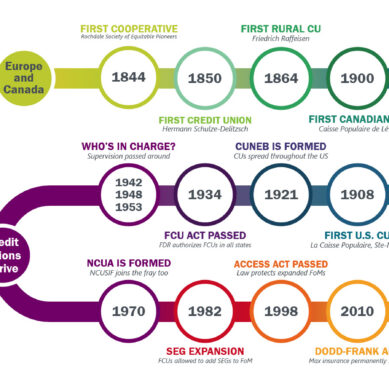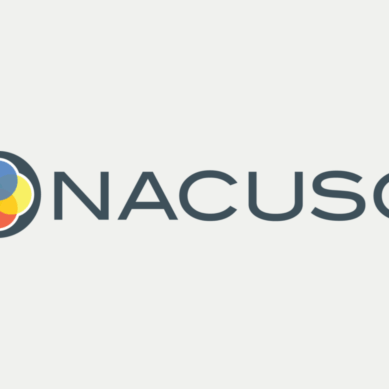AI adoption has taken the finance world by storm. In my career, I have yet to see a technology with the pace and impact of AI. Not even smartphones match its impact. However, there’s one corner of the industry that’s still lagging behind when it comes to modernizing its services: credit unions.
For a long time, credit unions set the gold standard for delivering service that made their members feel truly seen and heard. Now, though, they’re at risk of falling behind their banking counterparts in the digital space.
While Baby Boomers take up the vast majority of credit unions’ membership base, that’s soon going to change. We’re on the cusp of the Great Wealth Transfer, an incredibly exciting time in the financial history of humankind. More than $100 trillion is set to be passed down from Baby Boomers to younger, digitally native generations in the coming couple of decades.
Now more than ever, digital transformation is a non-negotiable for credit unions that want to stay afloat amid the rapidly shifting tides of the finance industry.
It’s time to do more with less
I’ve found that credit unions rely too much on throwing people at every problem. This doesn’t work for multiple reasons.
First, most credit unions are operating on outdated legacy infrastructure, including legacy loan origination systems. These infrastructures are usually built on fragmented systems, which prevent crucial data from being properly exchanged. This is a serious vulnerability from a security as well as an operational standpoint.
The result is a vicious cycle: important details slip through the cracks, and members receive incorrect responses to loan applications. Staff are already inundated with other tasks then have to step in and rectify the situation, adding even more administrative and operational strain.
Ultimately, it creates a less-than-adequate experience for the member, who just wants to resolve their query or application in as little time as possible. This is the next issue: most paperwork and information is manually reviewed in credit unions, and a big chunk of the service is delivered offline.
Countless trips to the office, not to mention back-and-forth phone calls and emails, are hallmarks of most members’ experiences. Often, they’re talking to a different representative each time, causing confusion and heightening frustration. Credit unions are battling a massive leak of deposits from inheritance, and this is not coincidental. A lot of inheritors are younger individuals who are not only accustomed to, but expect a digital-first experience. When they don’t receive that, they simply take their money and leave.
AI tools can help credit unions address these issues head-on, taking the administrative burden off staff so they can focus on nurturing member relationships in more meaningful ways. Embedded solutions can process data and generate insights to automate a number of tasks, including verifying submitted documentation for accounts and monitoring security in case of any threats. These workflows don’t have to entirely sit on humans’ shoulders.
Deploy AI integration by use case
AI adoption shouldn’t happen in an all-or-nothing approach. There are some basic questions to ask:
- Where are the most bottlenecks happening?
- Which workflows are dragging out more than they need to?
- Where does it make sense to automate, and where should the human touch remain?
Throwing ChatGPT at your stack is a sure-fire way to cause more friction or doubt among employees.
Yes, some workflows may need a digital overhaul, but I urge credit unions not to completely rewrite their playbooks with AI. These tools are designed to augment existing core strengths and remedy any pain points.
Credit unions have always been renowned for their member-first, community-focused ethos. Integrating AI solutions in a carefully planned blueprint can empower them to reinforce that in a digitally forward era. For example, young inheritors usually don’t want to drive in person to submit a stack of documents, and credit unions don’t always have the personnel to verify each one right away. Here’s where AI can help streamline and speed up admin, automatically checking and verifying each document upon submission.
Keeping the human touch
It’s also vital not to remove the human touch where it’s most needed. AI tools are great for simple, routine tasks. However, a distressed member will need the empathetic ear of a person, not an AI-powered chatbot designed to follow a script. Always make sure to have a backup plan that involves a human when cases escalate.
One non-negotiable for any reputable financial institution is preserving a certain level of trust. Reassuring members that they’re being seen and heard is one thing. Credit unions also must nurture trust with their staff and members alike.
Regulations exist for a reason, and maintaining transparency around data handling and compliance is at the core of AI deployment. Understandably, members need reassurance that their data is being handled securely and in a legal manner. I recommend transparency around AI use in communications strategies, and demonstrating compliance in the form of certifications can be hugely beneficial for that.
Additionally, credit unions shouldn’t ignore their staff, who will be working alongside these tools, after all. Organization-wide buy-in is important to making the most of AI and ensuring that teams can reliably and confidently oversee AI tools. Hands-on training to familiarize teams with real-life use cases of AI is also a great way to quell any resistance to adopting the technology.
Data management
Finally, don’t forget data. One report found that 80% of financial institutions name data accessibility as a significant hurdle to leveraging their data assets effectively. AI is included in those data assets, so credit unions must get on top of their data management to maximize this technology.
Clean up data and eradicate any anomalies or errors, including duplicate data. Credit unions must also ensure that data is well structured and interoperable between platforms to reduce the risk of AI hallucinations and bias.
At the basis of all this, a data governance framework for compliance, security, and accountability purposes is a must. This is essentially the backbone of any AI deployment strategy, ensuring that data is used and exchanged securely and ethically. I also believe that this is at the heart of ensuring trustworthiness around AI.
Use AI wisely
AI isn’t the only piece of the digital transformation puzzle, but it’s certainly a crucial one. Credit unions looking to keep pace with rapidly shifting expectations in an increasingly digitalized industry have to consider emerging technologies like AI-powered solutions. However, rather than rushing to transform their tech stack, careful planning around integration is key.
























































